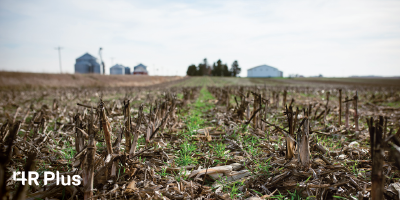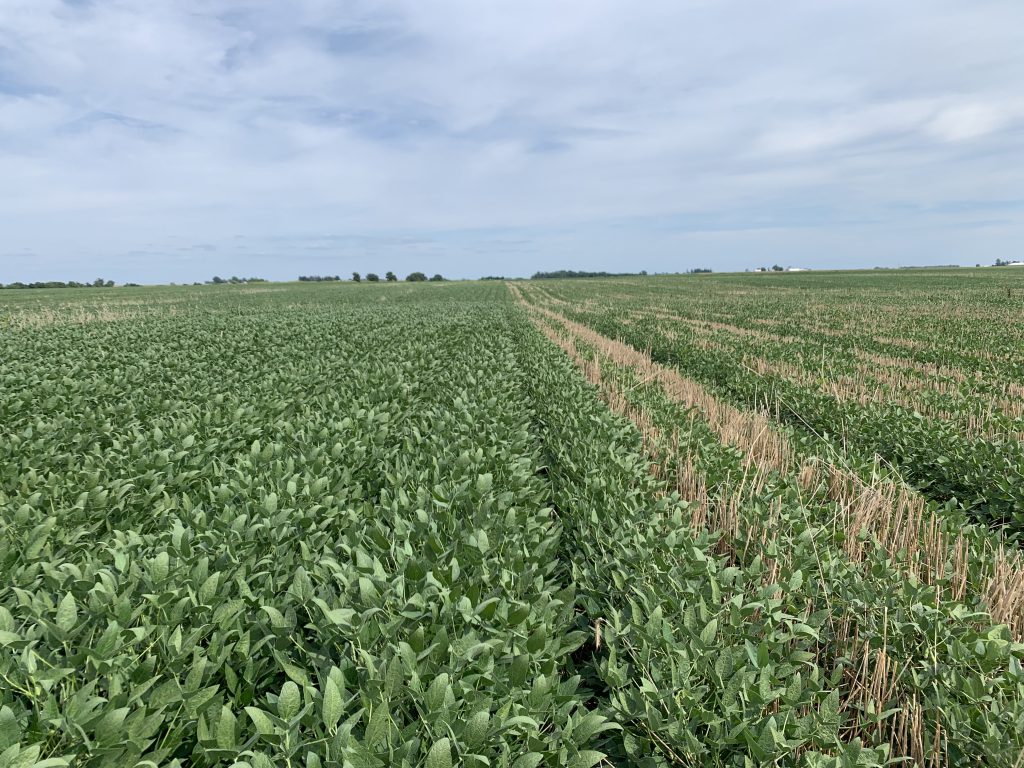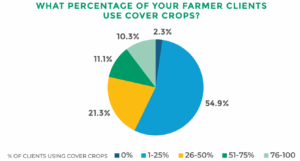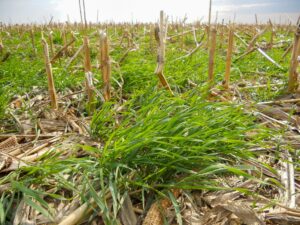By: 4R Plus
December 2021

Farmers are coming off a profitable year and planning for the 2022 growing season that’s expected to feature high input prices amid thin supplies. 4R Plus followed four farmers from various regions in Iowa in 2021 who say “Plus” practices like cover crops reduced fertilizer and herbicide use while protecting yields.

“We utilize cereal rye ahead of soybeans to reduce chemical costs by eliminating residual herbicides,” said Michael Vittetoe, a farmer in Washington County. “This reduces expenses by greater margins than the cost of cover crops. So that’s how we are paying for it. The weed control aspect is where it has the ability to pay off in year one.”
He has also cut chemical use by mechanically terminating rye in the spring and hopes to improve his method of doing so next spring.
Kelly Nieuwenhuis, a first-time cover cropper in O’Brien County, says if he can’t get herbicide early enough in the growing, he will harvest it for seed and then plant an early maturing soybean variety.
Dale Launstein of Grundy County says he’s not overly concerned about glyphosate supplies because he does a late, single-pass burndown of his rye, limiting his herbicide needs and giving him more flexibility on timing. Terminated rye also helps with weed suppression and moisture retention.
Soil health practices also help reduce yield variability and improve crop health. Vittetoe produced a record soybean crop amid varied weather, saying cover crops and no-till helped retain moisture when the crop needed it the most.
Soil testing can help pinpoint nutritional needs

These producers also see the benefit of testing soils to better target nutrient management. “As expensive as fertilizer is, this is the time to make sure you’re utilizing it where you absolutely need it,” said Julius Schaaf, a fifth-generation farmer in Fremont County.
Nieuwenhuis said he was happy with his yields on 130 pounds to 140 pounds per acre of spring-applied urea with a stabilizer and hopes to further reduce his nutrient use next season by trying out some new biologics.
Efforts to boost soil health can also help in cash-rent negotiations
Prices are also on the rise for Iowa farmland, with a limited amount of ground up for grabs. The state recorded new record-high prices for farmland in 2021, with cash rental rates also on the rise. Iowa State University reports cash rental rates for Iowa farmland climbed an average of 4.5% in 2021, the first substantial rise since 2013.
“I think one thing a tenant can do to improve their stature with the landlords is to talk about the practices they would implement to preserve the soil and build organic matter,” Schaaf said.
It’s not always about the highest dollar to landlords, he observed. “There are a lot of people interested in our sustainability and our ability to maintain farms in a high productive state,” Schaaf said. “But it doesn’t just happen by accident; it happens by design.”
Interest in conservation practices on Iowa farmland is growing

Advances in farm technology, rising input costs, the hot land market and the Biden administration’s focus on climate change are making 4R Plus practices like cover crops and no-till a more feasible and attractive option for producers.
Launstein reported in Grundy County, some of the state’s highest-rated farmland, he’s seeing an uptick in interest in sustainability practices. He has happily shared his time and resources with others who have shown some interest in these practices and said, “You dip your toe in and learn a little more every year.”
Nieuwenhuis’ first cover crop is off to a solid start and he’s hoping to expand on his efforts if he can prove it’s both “economical and beneficial to my farming operation.”
He recommends everybody do a “little bit” on their own farm, whether that’s reducing tillage, planting a cover crop or shifting nitrogen application to spring. “It’s not an overnight situation,” Nieuwenhuis said.
Interested in learning more about each of these producers and the 4R Plus practices they use? Read their full harvest reports.



